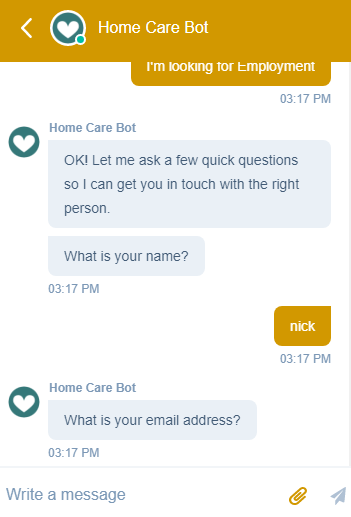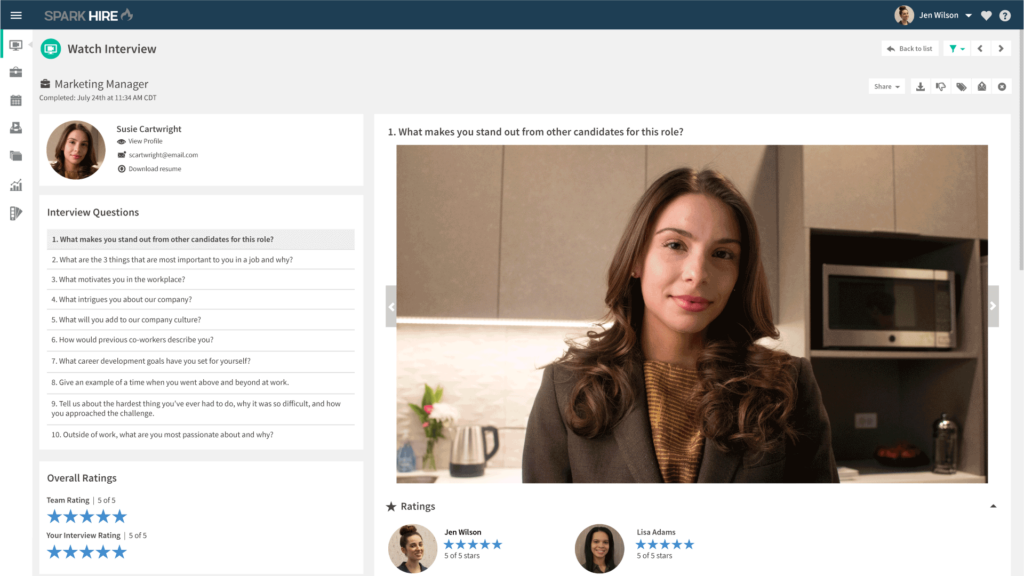The technological landscape of the 21st century has presented endless opportunities for businesses to augment almost all of their processes, especially recruiting.
From job advertisements written by computers to chatbots that can interview candidates, AI is finding its way into large corporations and startups alike; but is this a good thing?
Every sales rep will tell you that their product or service will revolutionize your processes, save your recruitment and HR team hours, and provide an unbelievable return on investment.
However, while all of this sounds fantastic at face value, the truth is rarely as definitive.
There is always a trade-off when allowing AI to take over a human aspect of any role, and understanding this should be the first step towards looking to integrate one into your business.
Should you consider AI for your hiring process?
When it comes to adding artificial intelligence (AI) in your recruiting process, we highly recommend only automating what you are already doing well.
Setting up automation before understanding your processes can create more work and difficulties for your team.
You need to understand your talent pool before looking at ways of letting AI take over any part of your interview process.
You also want to make sure that any automated processes do not give your candidate an incorrect first impression of your company.
If the process feels automated, it will leave candidates feeling like they aren’t worth an actual human’s time. Invest in ensuring that the process doesn’t feel robotic or desensitized for your applicants.
“The post-pandemic world has left a huge amount of the population craving real human interaction. People are returning to the office searching for what they had lost over the past two years of global lockdowns, so presenting these candidates with an automated first impression of your company seems counterintuitive to me,”
Stone continues, “We built [our] company on the basic principle of picking up the phone and having a real conversation; there wasn’t any software or AI to use back in 1997. We didn’t even have a digital CRM! So mastering the basics yourself before letting a program take over part of the process is essential.”
Make sure that your applicants feel valued and heard during the recruiting process.
Understanding the 20/60/20 principle in hiring
When looking at more senior-level roles, integrating AI into your hiring process can cause more issues than it solves.
When you look at a company that has thousands of applications for entry-level positions, introducing an element of automation at the first stage can be effective if executed properly.
However, when looking at senior-level positions, candidates often expect a more tailored approach to their application process, which usually starts with a human.
A great way to understand where you should concentrate your recruitment marketing efforts is with the 20/60/20 principle.
As a standard, 20% of the population are actively looking for a new role, 60% aren’t actively looking but would be open to a good role if it was right for them, and the last 20% aren’t looking and aren’t available to work.
That middle 60% is often where you find the best candidates.
It is difficult for most people to effectively integrate AI into attracting or processing the 60% of candidates who aren’t actively applying for jobs.
One solution is to use AI to augment your current hiring process instead of completely taking it over.
Still, you have to make sure that you understand that process inside out before you do.
How are AI and automation being used in recruitment?
When it comes to any type of marketing, our team loves automating processes to save time and create a better user experience.
As mentioned, you should always make sure to run through your processes manually first before automating them. Starting with automation can lead to frustration as you don’t know what to expect.
That being said, there are many ways to use automation in recruitment.
Automated Chatbots
We use chatbots for our own website as well as for our customers. The best part of chatbots is that they are essentially forms on your website that the user can complete in a more digestible way.
If you think about most forms, they have too many fields.
They ask for name, job title you’re interested in, years of experience, and more.
Having too many fields on a form can reduce your conversion rate on your website as it creates unnecessary friction.
Chatbots can help alleviate this by asking one question at a time.

This makes filling out a form feel more like a conversation you’re having with someone.
If you’re asked everything at once, then you may be less likely to fill it out. Breaking this down question by question makes it easier on the user.
Just be sure you’re not asking 20 questions or they may get tired of the questions and abandon the chat anyway.

In addition to reducing friction in the conversion process, chatbots can help segment your traffic.
By asking the user to identify what their need is, you will clearly know if they are a candidate or a prospect from their answers.
This can streamline your recruitment process by connecting candidates with the right teams at your company much faster.
Automated Workflows
Automation is one of our favorite ways to help free up our customers’ time so they can focus on what matters most to them.
We love using HubSpot as a marketing automation tool for our customers. While it doesn’t have any great recruitment integrations or features, it can be super useful in setting up follow-up automations.
We’ve mapped workflow follow-ups for our customers based on their applicants’ interactions. Some examples include:
- Unresponsive applicant follow-up to see if they are still interested in the job
- Rehiring automation emails to reach out to candidates who may be interested in working for the company in the future
- Reminders to attend interviews
- Autoresponders when they schedule interviews
These are just some of the great ways you can take the manual work out of your follow-up with your candidates.
Video Interviews
One advantage of living in a modern age is being able to filter out qualified candidates beyond their resume.
Some candidates look great on a resume, but when they come in for an interview, they appear to be a different person.
As a hiring manager, you may know right off the bat that this person isn’t qualified.
With video interviews, you don’t need to have as many in-person interviews.
Companies like SparkHire and VidCruiter allow the candidate to respond to templated questions that you come up with. This lets you see their answers and how they respond before ever meeting them.

You can then decide to follow up and see if you’d like to have an in-person interview.
While it can take a lot of time to sift through video interviews, it’s easier to do so than scheduling interviews and taking the time to meet unqualified candidates.
How does technology help after the interview?
While you can use AI and automation to guide applicants to the interview stage, you can continue using technology to nurture these candidates beyond the interview.
Automated workflows can send out thank you emails to candidates as soon as they leave your building.
You can also incorporate training videos for new hires to help them learn about your company processes and the basics of their role more quickly.
At Miles, we love training our staff with video tutorials that explain our processes. While they’re no substitute for human interaction, they can save your employees time so they don’t have to explain specific processes to every new employee.
What are the benefits of AI and automation for recruiting?
Using AI and automation as part of your recruiting efforts can save you time as a business owner.
Thanks to video interviews, you no longer need to worry about the time-consuming process of interviewing every candidate who looks good on their resume.
You are also able to use data to improve the quality of your hires.
Many advertising networks like Indeed use advanced algorithms to help improve who sees your ads.
This leads to filtering better candidates through the top of the funnel while your internal automated processes help continue to filter them further.
By hiring the right candidates, you can focus on what matters for your business growth and set your organization up for success.
Article written by David Stone, Chief Executive of MRL Consulting Group. MRL is an international tech recruitment firm specializing in semiconductors recruitment. MRL has been finding and placing expert talent within the semiconductor industry for more than 20 years. David may also be found on LinkedIn.


